Bridging the Knowledges of Fiction: How can fiction serve as a tool for empowerment?
By Ashley Gendron, Amberlie Kaiser and Maya Gauvin
Ashley Gendron
Mythology

Watch Islands of Decolonial Love:
https://www.youtube.com/watch?time_continue=265&v=BJ5cMisAhHI
Leanne Betasamosake Simpson beautifully writes about the truth behind myths as a “ a theoretical anchor whose meaning transforms over time and space within individual and collective… consciousness.” (Simpson 11).
I believe that myths, although they can not be proven to be true in an academic sense because of the presence of spiritual events and supernatural beings I believe that they are true in a deeper more conceptual and metaphorical way. I don’t believe myths were ever meant to be taken literally because they are based on knowledge systems that advocate for us to come to our own knowledges on our own terms.
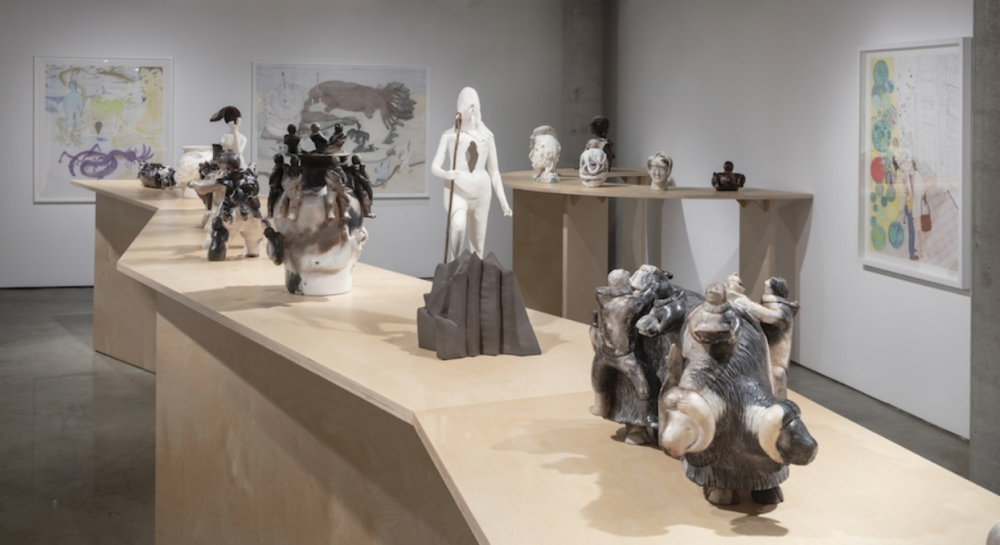 Earthlings Exhibition at the Esker Foundation in Calgary, Alberta
Earthlings Exhibition at the Esker Foundation in Calgary, Alberta
Artists: Roger Aksadjuak, Shuvinai Ashoona, Pierre Audilardjuk, Shary Boyle, Jessie Kenalogak, John Kurok and Leo Napayok
“Artists who work from their intuition, who channel their personal experience and cultural memory for narrative. These artists choose their subjects because they know them intimately, personally, physically. It is a way of working that is innate and encourages a conversation larger than art” (Boyle n.p.).
“Bridge art” it spans between things, between people, animals, space and earth. It spans languages. It spans the real and unreal. The living and the dead. The past and the future. It is art to communicate, through symbols, myths, dreams and hybrids. It connects” (Boyle n.p.).
Earthlings presents a surreal experience of what it means to be human.
 Bill Reid Spirit of Haida Gwaii, Vancouver international Airport
Bill Reid Spirit of Haida Gwaii, Vancouver international Airport
Bill Reid is a Canadian Indigenous artist working with traditional stories (myths) and uses them to tell stories. This incredible narrative shares the story of the aboriginal heritage of Haida Gwaii.
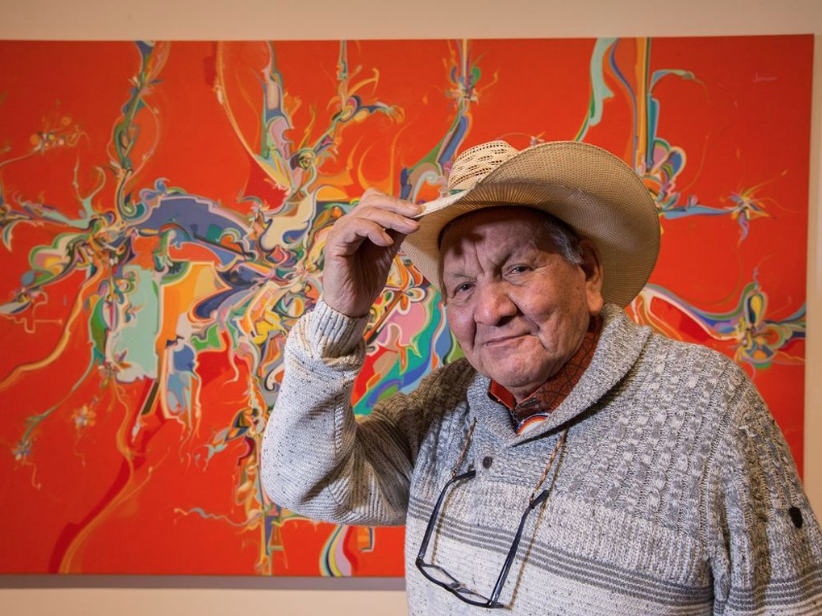 Alex Janvier, Lubicon, Collection of the Art Gallery of Alberta, Edmonton
Alex Janvier, Lubicon, Collection of the Art Gallery of Alberta, Edmonton
Alex Janvier is a Denesuline artist from Cold Lake First Nations, Alberta. His work is informed by traditional stories, traditions, spirituality and personal symbolism.
Bibliography
Boyle, Shary, and Shauna Thompson. “Earthlings.” Esker Foundation | Contemporary Art
Gallery, Calgary, eskerfoundation.com/exhibition/earthlings/.
Giroux, Henry. “Doing Cultural Studies: Youth and the Challenge of Pedagogy.” Harvard Educational
Review, vol. 64, no. 3, 1994, pp. 278–309.
Simpson, Betasamosake Leanne. “Land as Pedagogy: Nishnaabeg Intelligence and rebellious
transformation.”Decolonization: Indigeneity, Education, and Society, vol. 3, no. 3, 2014, pp. 1-25
Maya Gauvin
Future Visions: Science Fiction in music, film, literature and art.
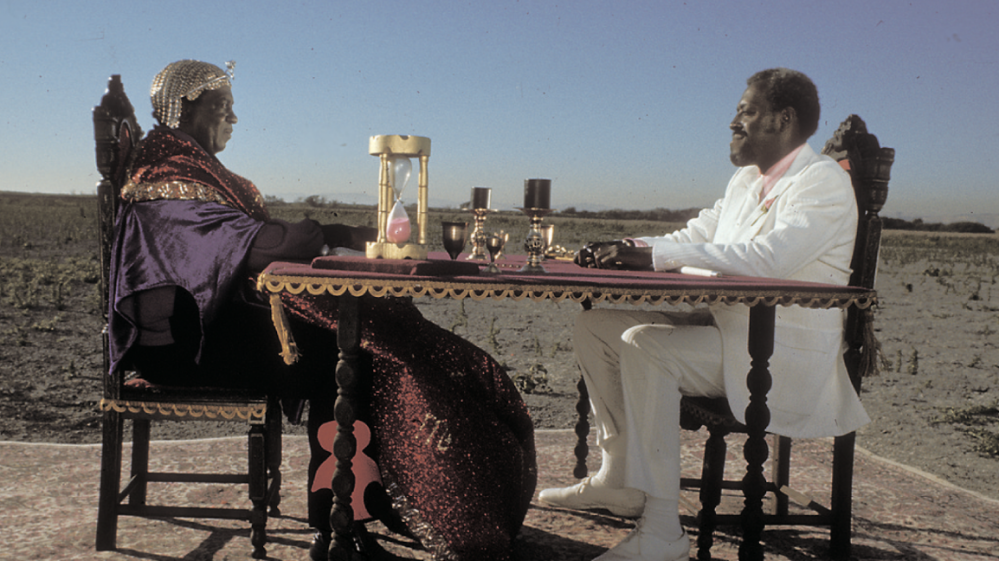
Sun Ra in his 1974 musical film ‘Space is The Place’
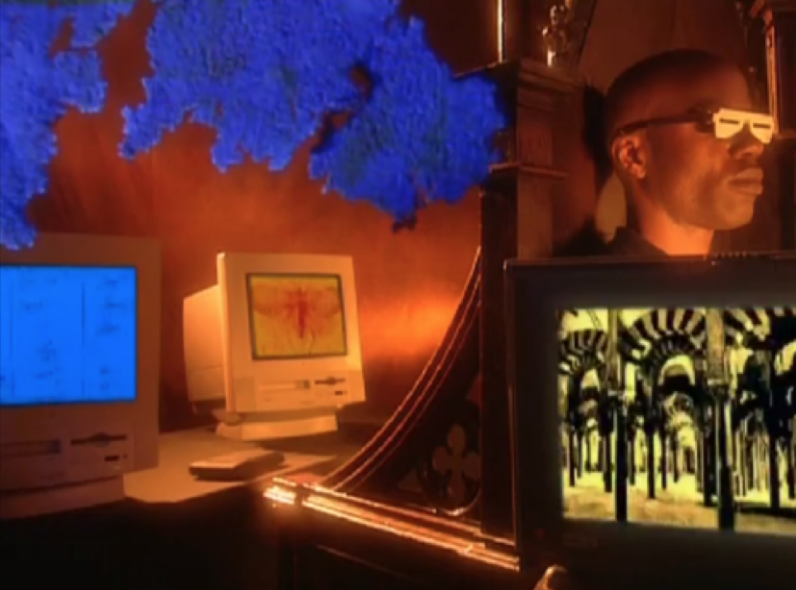
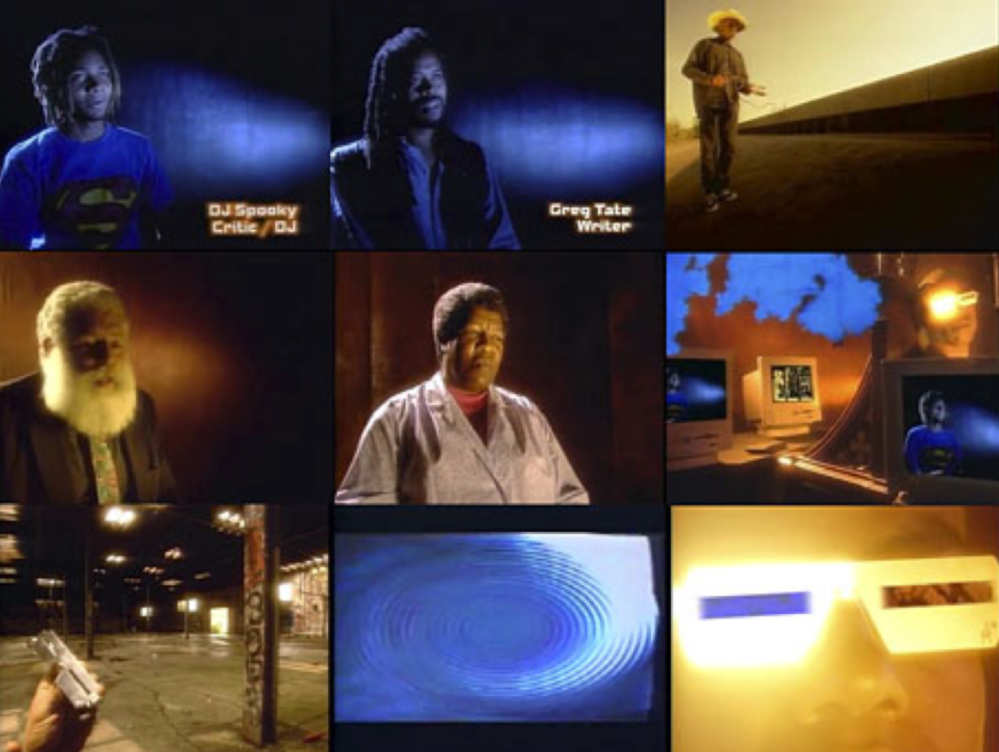
‘The Last Angel of History’ by John Akomfrah:
Click here to watch the trailer: https://www.youtube.com/watch?v=iYe_nj7xfQM
Through digital video editing effects, archival clips and interviews, this film discusses historical narratives of black identity, experiences of African Diaspora and how technology and science fiction serve as critical tools for altering those narratives. The fictional character who narrates the film, The Data thief, is an archaeological pilferer who guides us through time and through histories to, ‘crack the code, giving the keys to the future.’
“A Klee painting named “Angelus Novus” shows an angel looking as though he is about to move away from something he is fixedly contemplating. His eyes are staring, his mouth is open, his wings are spread. This is how one pictures the angel of history. His face is turned toward the past. Where we perceive a chain of events, he sees one single catastrophe which keeps piling wreckage upon wreckage and hurls it in front of his feet. The angel would like to stay, awaken the dead, and make whole what has been smashed. But a storm is blowing from Paradise; it has got caught in his wings with such violence that the angel can no longer close them. This storm irresistibly propels him into the future to which his back is turned, while the pile of debris before him grows skyward. This storm is what we call progress.”
Walter Benjamin (Illuminations 257-58)
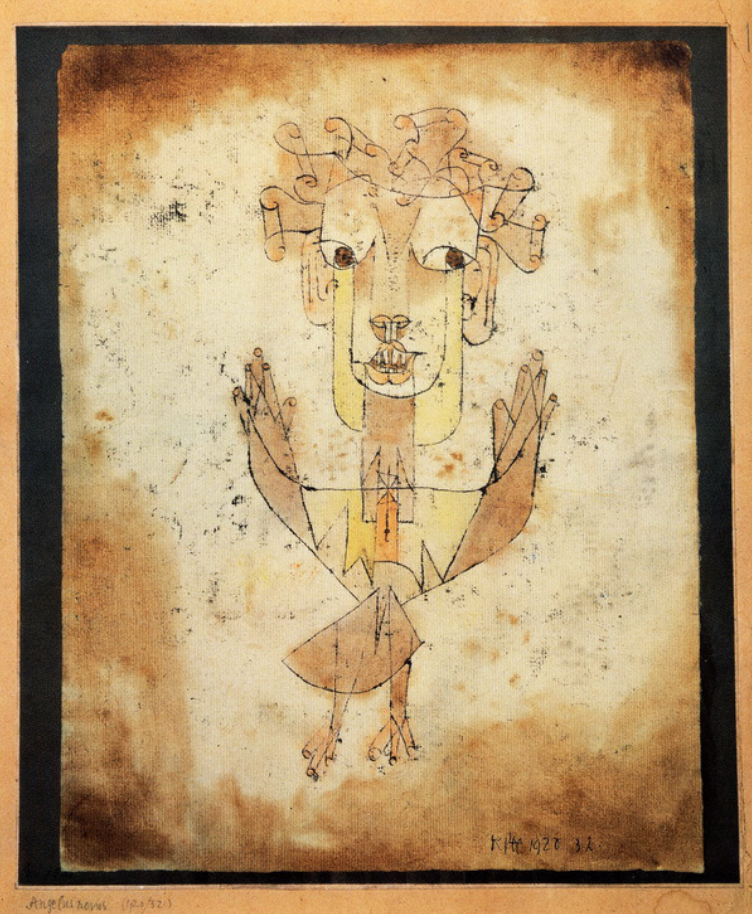
‘Angelus Novus’, Paul Klee. Monoprint, 1920
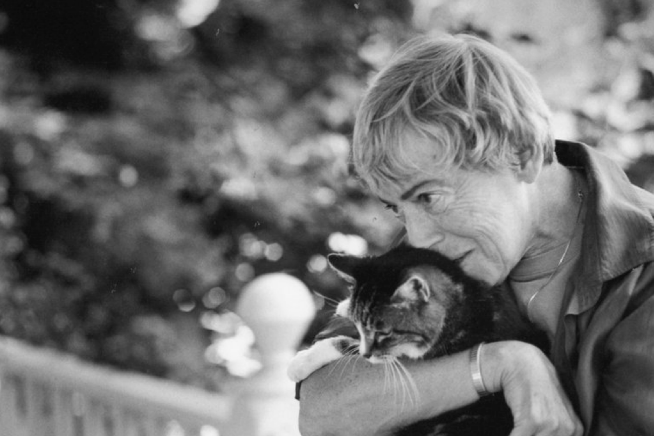
Ursula K. Le Guin
1929 – 2018
“I don’t think science fiction is a very good name for it, but it’s the name that we’ve got. It is different from other kinds of writing, I suppose, so it deserves a name of its own. But where I can get prickly and combative is if I’m just called a sci-fi writer. I’m not. I’m a novelist and poet. Don’t shove me into your damn pigeonhole, where I don’t fit, because I’m all over. My tentacles are coming out of the pigeonhole in all directions.”
Ursula Le Guin accepts the National Book Award: https://www.youtube.com/watch?v=3_vzSgkjBEI
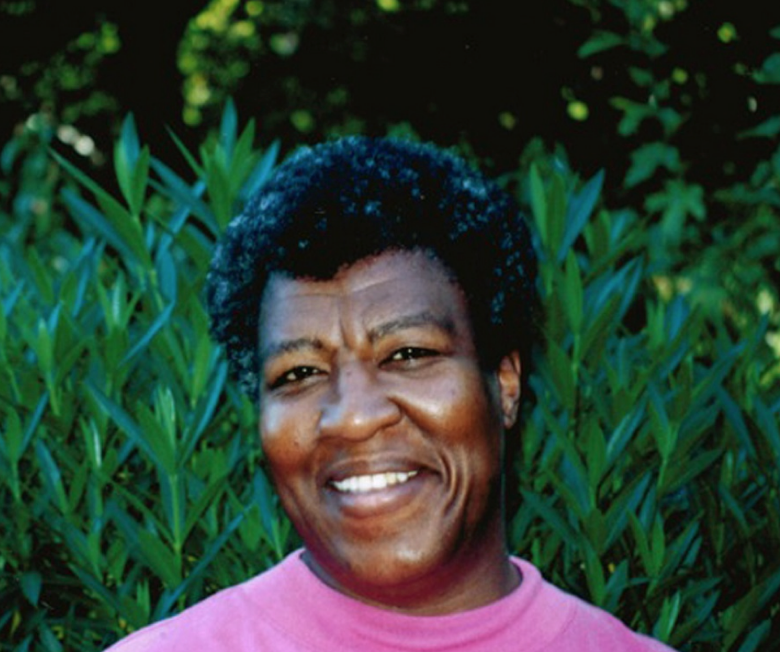
Octavia Butler
1947 – 2006
Octavia Butler Interview on NPR and essay on racism:
https://www.npr.org/programs/specials/racism/010830.octaviabutleressay.html
Speculative Feminism:
Mai-Thu Perret
‘The Crystal Frontier’ (ongoing)
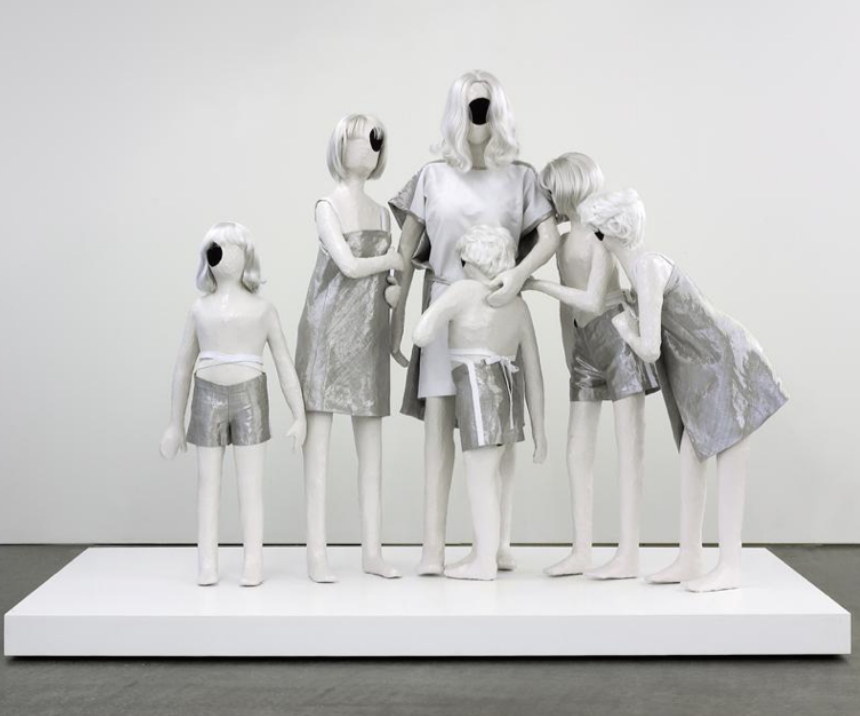
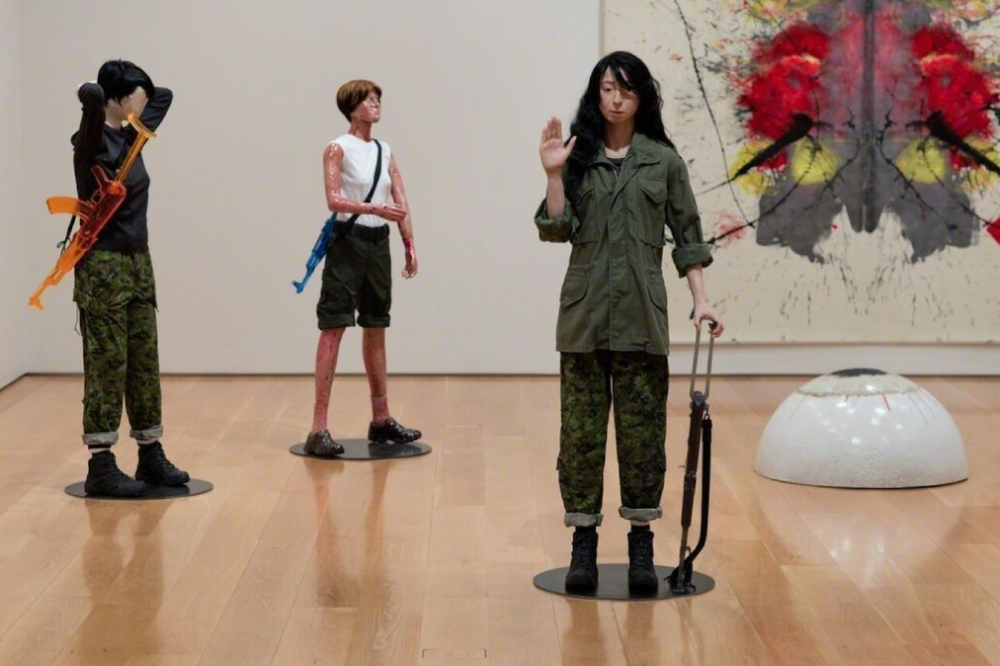
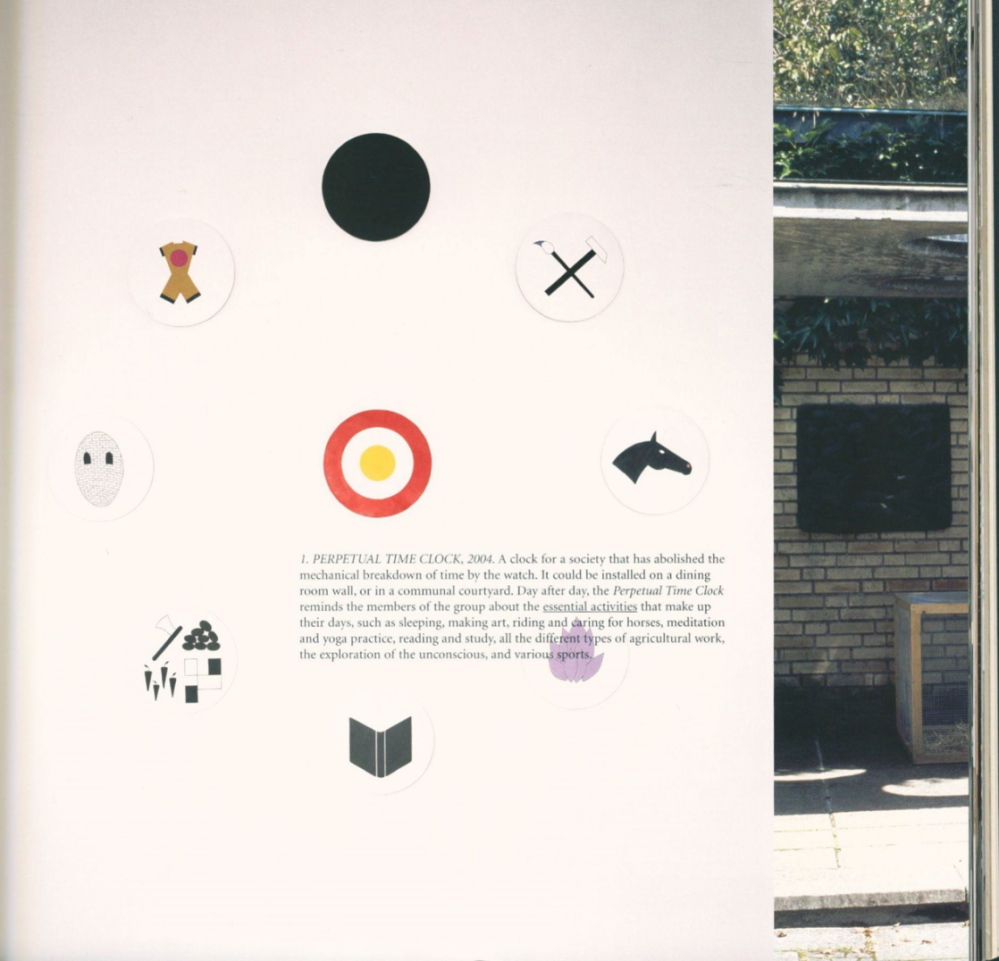
From the book, Land Of Crystal. JRP|RINGIER, 2008.
Donna Haraway’s
‘The Cyborg Manifesto’
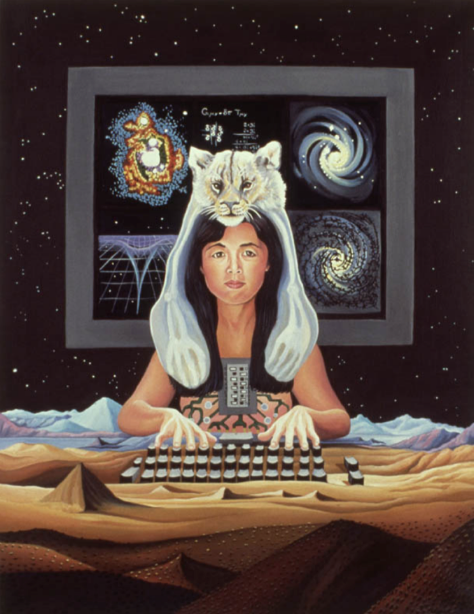
Lynn Randolph’s, Cyborg, 1989.
Cover image for Donna Haraway’s: Simians, Cyborgs, and Women, 1991
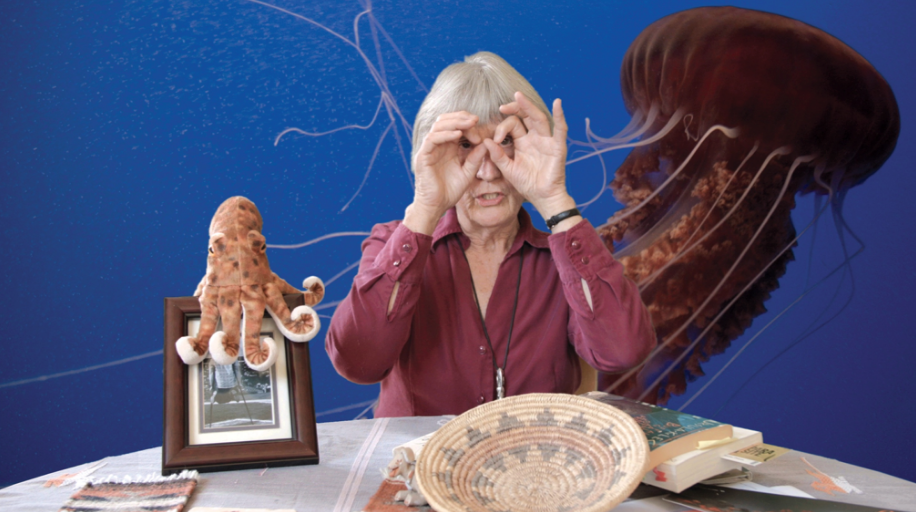
“The cyborg is a matter of fiction and lived experience that changes what counts as women’s experience in the late twentieth century. This is a struggle over life and death, but the boundary between science fiction and social reality is an optical illusion. Contemporary science fiction is full of cyborgs-creatures simultaneously animal and machine, who populate worlds ambiguously natural and crafterd” (Haraway 150)
“The cyborg is a creature in a post-gender world; it has no truck with bisexuality, pre-oedipal symbiosis, unalienated labour, or other seductions to organic wholeness through a final appropriation of all the powers of the parts into a higher unity. In a sense the cyborg has no origin story in the Western sense- a ‘final’ irony since the cyborg is also the awful apocalyptic telos of the West’s escalating dominations of abstract individuation, an ultimate self untied at last from all dependency, a man in space.” (Haraway 151)
Bibliography
Akomfrah, John. The Last Angel of History, Black Audio Film Collective, 1996
https://www.youtube.com/watch?v=iYe_nj7xfQM
Benjamin, Walter. Illuminations . Edited with an Introduction by Hannah Arendt Translated by Harry Zohn. Schocken, New York, 1969.
Haraway, Donna. ‘A Cyborg Manifesto: Science, Technology and Socialist-Feminism in the Late Twentieth Century’ Chapter 8. (pg. 149-181) Simians, Cyborgs, and Women: The Reinvention of Nature, Routledge New York, 1991
Additional References:
Haraway, Donna
(Acceptance of The Pilgrim Award for lifetime achievement in Science Fiction scholarship.)
https://people.ucsc.edu/~haraway/Files/PilgrimAcceptanceHaraway.pdf
‘What lies beneath the Brave New World of feminist dystopian sci-fi?’
Octavia E. Butler – Essay on Racism
https://www.npr.org/programs/specials/racism/010830.octaviabutleressay.html
Amberlie Kaiser
Children’s Philosophy: How fiction can be used as a tool to educate and empower children to think about hard problems.

Calvin and Hobbes, Bill Watterson.
Bill Watterson utilizes dialogues between his characters to inspire philosophical thoughts in his readers. His drawings and writing are witty and intelligent, often in the form of playful banter.

Mac Barnett explores how a good book can be a secret door. He explains that fiction can suspend disbelief and allow children to consider other worlds.
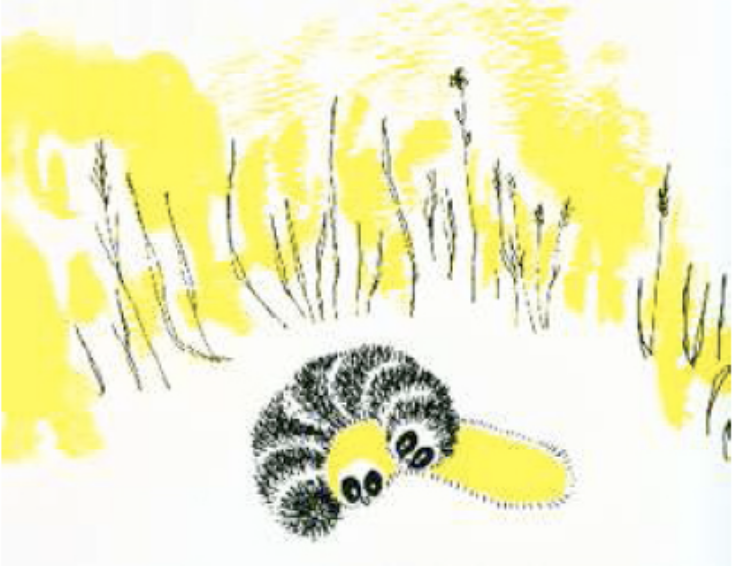
In Hope For The Flowers by Trina Paulus, two caterpillars struggle with the concept of climbing and using others to “get up” and reach their goals.